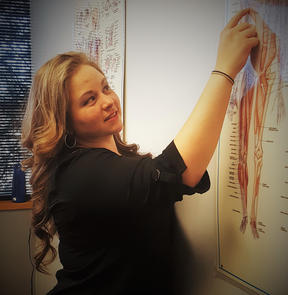The Educator’s Experience – Part 1: Patient Education
Teaching has always been in my blood. In fact, in the first grade, my family got called into a meeting with my teacher, Mrs. Johnson, to discuss an interesting dilemma that I was in. We would often get little in-class assignments to work on, whether it was writing, math, or reading. Apparently, I had the tendency to wander around the classroom to help the other students do their assignments, and wouldn’t work on my own until I’d helped the others. When my teacher tried to keep me in from recess as a motivator for me to do what I was supposed to be doing, it didn’t phase me a bit. She didn’t know what to do with me!
By the time I got to 4th or 5th grade, I was taking advantage of becoming a peer mentor at the school, working with younger students to resolve conflicts between one another. In middle school, I became a tutor for other students. Once high school rolled around, I became a swimming instructor and life guard. Fast forward to grad school, and I was teaching weekly dance classes over the lunch hour.
Now, I have multiple opportunities to continue in the practice of education. First, I am a clinical instructor at my alma mater, which means that I assist in lab-based courses as students are learning hands on skills. I also get the occasional chance to teach content, primarily on the topics of the integumentary system and wound care, since I have years of experience in that area. My other opportunity is a daily one – educating my patients as a physical therapist. I find that both of the avenues are incredibly important and rewarding.
Here’s why.

As a physical therapist, I have the daily opportunity to help change someone’s life. I help one person with pain management, after dealing with the same pain for four years, feeling frustrated that it’s keeping them from some of their favorite activities. I help another after a stroke or brain injury, needing to re-learn seemingly basic things, and celebrating each small victory with them, like when they can put a sock on for themselves for the first time. I help yet another person with preventative treatments, helping to stave off injury as an athlete. Many of the things that achieve these goals are things like hands-on treatments, trigger point dry needling, or exercise, to name a few.
However, I find that one of the most powerful things that I can do for a patient is to teach them something. That “something” is different for everyone. Sometimes, someone wants to know about the anatomy and physiology of what is going on in his or her body. I find that some people put more credence in the exercise program that I give them for home when they understand more about why they’re getting the exercises that I’m prescribing. If someone has been having pain for a while, or recently had surgery, that person may be fearful of movement, or afraid of re-injury. Educating this person about what to expect, talking about how it is ok to move, or introducing some gentle exercise can be a major breakthrough.
One of the more interesting things that I’ve found as an educational tool is regarding stress management, and can include things like simple meditation or mindfulness tools. I’ve had two profound cases that demonstrate this piece beautifully.

The first was a young mother who was in a car accident with her young children in the car. The kids were unharmed, but the mother had significant whiplash. During our initial session together, any time she talked about specifics of the accident, she would start to rock and shake, with obvious signs of high anxiety related to it. The next session was spent entirely on stress and anxiety management, with meditation techniques to use at home. After that, something changed in her. She was able to talk about the accident without the visceral responses, and demonstrated an overall change in her demeanor. She was able to make good progress from there after.
The second was a man who had had a massive shoulder surgery. He was having a lot of pain, and was having difficulty managing it well. At one point, between out of control pain levels and high stress at home, his body was finally rebelling, being sent to the hospital with seizures. We spent a portion of our next session going through some of the same techniques used with my other patient, and encouraged regular use of them. The next time I saw him, he reported significant improvement, and, again, continued to make good and steady progress. All of these are reasons that I believe that education on any number of topics are such an incredibly powerful tool for my patients, and regularly use them in sessions. No matter what exercises I prescribe or the hands-on treatment that I provide, I truly feel that the education piece is often the best gift that I can give to my patients.
In the next blog post, I’ll be talking more about my experiences working with Doctor of Physical Therapy students, and why it’s another area of education that I’m passionate about.

Article author, Alyssa Arms, PT, DPT, OCS holds a Doctor of Physical Therapy (DPT) degree from the University of Colorado Anschutz Medical Campus, and later obtained a Board Certification as an Orthopedic Clinical Specialist (OCS). She is also the President and Owner of Back in Step Physical Therapy in Centennial, Colorado, and is an instructor at her PT alma mater.
